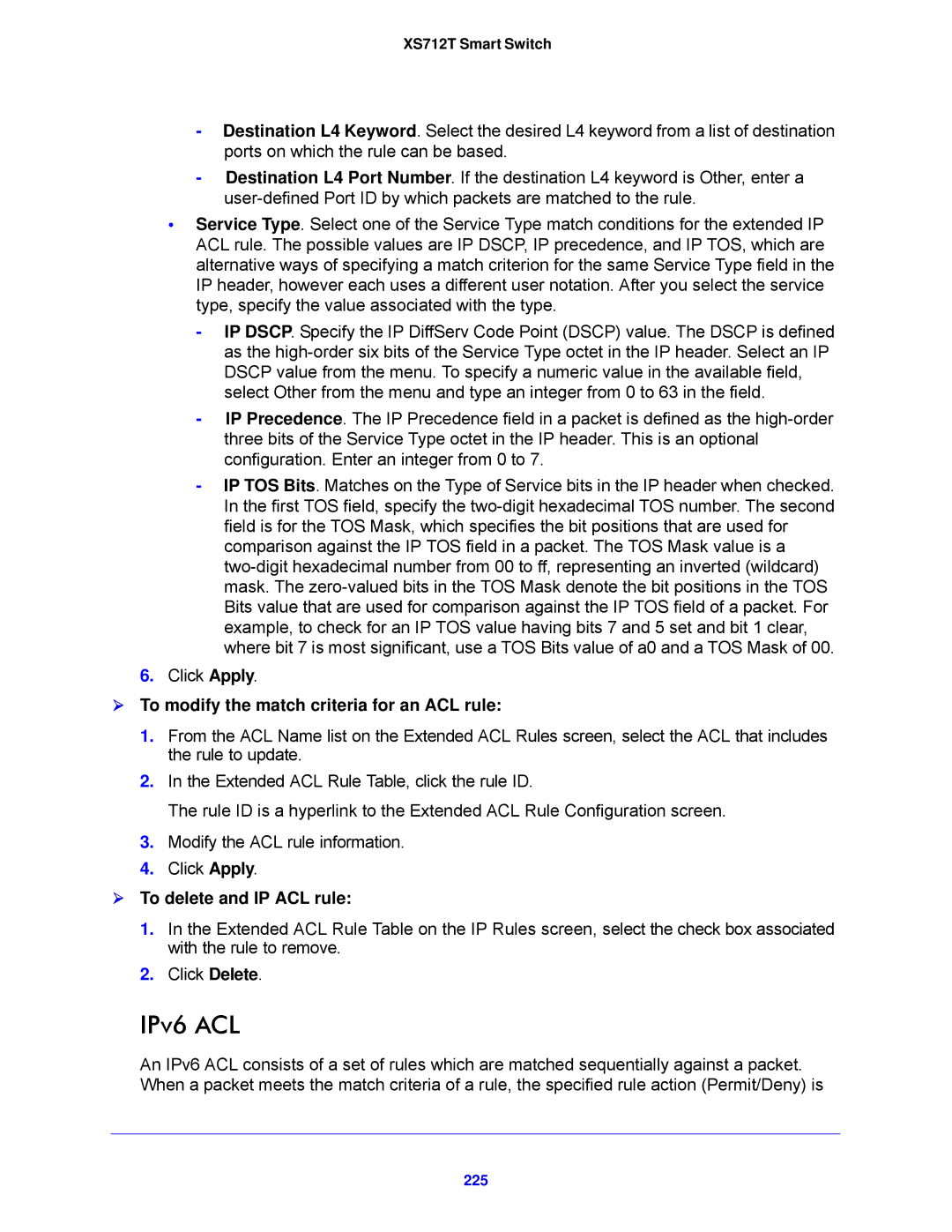XS712T Smart Switch
-Destination L4 Keyword. Select the desired L4 keyword from a list of destination ports on which the rule can be based.
-Destination L4 Port Number. If the destination L4 keyword is Other, enter a
•Service Type. Select one of the Service Type match conditions for the extended IP ACL rule. The possible values are IP DSCP, IP precedence, and IP TOS, which are alternative ways of specifying a match criterion for the same Service Type field in the IP header, however each uses a different user notation. After you select the service type, specify the value associated with the type.
-IP DSCP. Specify the IP DiffServ Code Point (DSCP) value. The DSCP is defined as the
-IP Precedence. The IP Precedence field in a packet is defined as the
-IP TOS Bits. Matches on the Type of Service bits in the IP header when checked. In the first TOS field, specify the
6.Click Apply.
To modify the match criteria for an ACL rule:
1.From the ACL Name list on the Extended ACL Rules screen, select the ACL that includes the rule to update.
2.In the Extended ACL Rule Table, click the rule ID.
The rule ID is a hyperlink to the Extended ACL Rule Configuration screen.
3.Modify the ACL rule information.
4.Click Apply.
To delete and IP ACL rule:
1.In the Extended ACL Rule Table on the IP Rules screen, select the check box associated with the rule to remove.
2.Click Delete.
IPv6 ACL
An IPv6 ACL consists of a set of rules which are matched sequentially against a packet. When a packet meets the match criteria of a rule, the specified rule action (Permit/Deny) is
